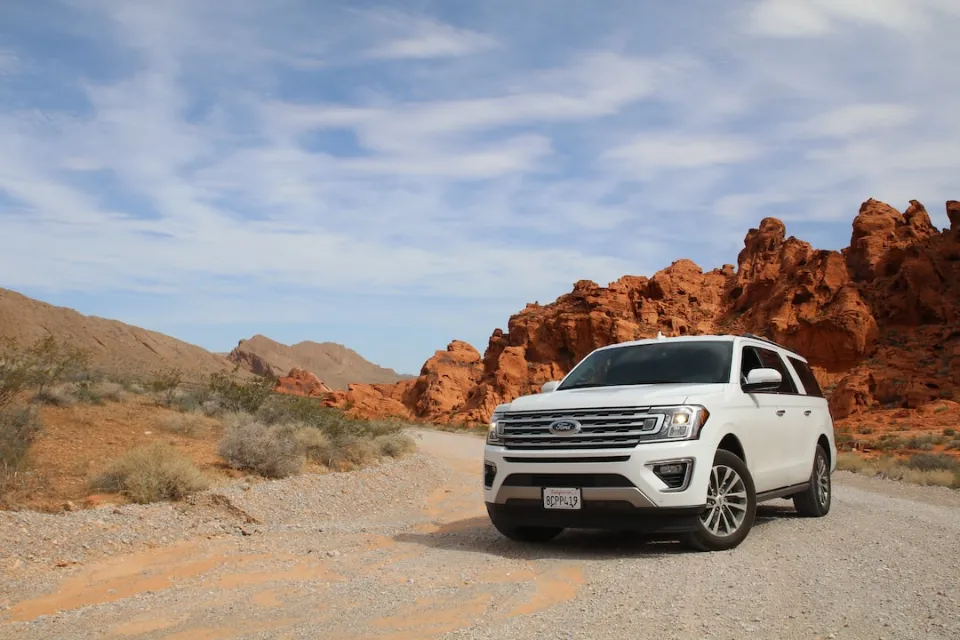How many miles are on the odometer is unavoidably a crucial factor when thinking about buying a used car. So, how many miles are too many for a used car?
Simply multiply 12,000 by the age of the vehicle to determine whether the mileage is reasonable. This indicates that 60,000 miles is a reasonable mileage for a car that is five years old. Significantly more or fewer miles may be a sign of future issues.
Keep reading.
How Many Miles Are Too Many for a Used Car?
A car is now often just entering its second phase at 100,000 miles thanks to numerous design, engineering, and material advancements; with proper maintenance, even 200,000 or 300,000 miles are now feasible. The latter point is crucial. The odometer reading isn’t always important; rather, how the car was driven and maintained affects how long it lasts, especially if its lifespan is documented by a mountain of service records.
A 1989 Mercedes-Benz station wagon owned by the author has 220,000 miles on it and still has a good amount of life left in it despite never missing a maintenance appointment (it has a rebuilt head but an original bottom end). Irv Gordon, a well-known and meticulously cared-for 1966 Volvo 1800S owner from Long Island, logged more than 3.25 million miles on the same engine (despite two rebuilds).
Contrary to popular belief, even with 200,000 or more miles on the odometer, cars with extremely low mileage that sit idle for extended periods of time can pose more of a problem than cars that are continuously used. The aging process is still happening to cars even though they are inert garage art.
A foreign car mechanic told the author he hates working on seldom-used vehicles, no matter how shiny the paint, because “they need everything, and their owners don’t understand why.” Many experts agree, “Shock absorbers, brake rotors and pads, tires, and other parts may require replacement if the recommended maintenance schedule has not been followed. If the tires are old, they probably have dry rot—basically, they are cracking from aging—which makes them hazardous. The radiator and heater core are additional components that age.”
So when shopping for a used car, don’t always assume that the lowest-mileage example of the vehicle you want is the best buy. Highway commuters in regular use are frequently less troublesome than static displays. The service records, which savvy owners keep, should be the first thing you request. It’s likely that the garage car was out of sight and out of mind and will need to be recommissioned, which could be expensive.
Instead, pay attention to the reliability, purchase price, and odometer reading in addition to the mileage. And pick a car with a solid reputation for dependability, especially when shopping in the $10,000 and under range.

Is It Wise to Buy a Car With High Mileage?
Despite the fact that many people avoid buying cars with high mileage because they believe they are riskier and more likely to have issues, modern vehicles are built to last much longer. When you purchase a car with a lot of miles on it, the depreciation curve has already flattened, so its value won’t drop quickly (like a brand-new car does). High mileage vehicles also tend to be well lubricated and burn carbon buildup, both of which contribute to the engine lasting longer because cars are designed to be driven. Low mileage vehicles, however, frequently don’t receive as frequent fluid changes, which can lead to issues down the road.
The typical American car is around 12 years old, which puts the average mileage at approximately 144,000. The number of additional miles you can put on a used car to bring its mileage up to the average of 144,000 should also be considered when deciding whether to buy it. If a car has 100,000 miles, for instance, you have about four more years before you reach the average mileage.
Although the 12,000-mile-per-year rule is useful for estimating a vehicle’s average mileage based on its age, mileage alone shouldn’t be the only factor when choosing whether to buy a car. To determine how well it was maintained and how many owners it has had, you should also examine the vehicle history report for the vehicle. Additionally, you should always have it inspected by a used car technician who can point out any potential unforeseen issues with the car.
How to Pick a Used Car?
A car was considered to be past its prime when it reached 100,000 miles, according to an old wives’ tale. But despite their complexities, modern vehicles are even more reliable, thanks to a multitude of technological advancements. In general, provided the vehicle is being properly maintained, the majority of modern cars can travel 200,000 miles without experiencing any significant problems. Given that the typical person drives 10,000–20,000 miles per year, this translates to about 15 years of service.
Here are a few things to think about when estimating used car mileage.
Maintenance Cycles
Cars are constantly degrading, which is a harsh reality. Drivers can restart the cycle and keep their cars on the road by performing routine maintenance and component replacements. As long as the parts surrounding the engine are in good condition, the mileage does not necessarily have a significant impact on the viability of the vehicle because engines are fundamentally designed to last for hundreds of thousands of miles.
Timing Belt & Chain
Often overlooked, the timing belt is a crucial element of any working engine, and it needs to be replaced every 60,000-100,000 miles. It can result in severe damage and possibly result in the engine being destroyed if it wears out and snaps. If you intend to keep the car for a while, think about doing the belt replacement yourself or look for a car that has recently undergone maintenance.
While the timing chain operates in the same way as a timing belt, it usually lasts two to three times longer. Some motorists would rather never change it because doing so could occasionally cost more than selling or trading in the car to get a new one.
Brakes
While brake discs can last up to 120,000 miles, brake pads must be replaced every 30,000 to 70,000 miles. It’s critical to spend money on proper maintenance because, fortunately, brake pads are reasonably cheap to replace.
Common signs of worn brakes include uneven, sticky braking and scraping noises when applying the brakes. These symptoms can appear suddenly. When evaluating a used car, be sure to look into the service history and current state of the brake shoes, which are frequently replaced in tandem with the brake pads.
Transmission
The transmission is one of the most important and costly parts to both repair or replace, with an average lifespan of 150,000-200,000 miles. Drivers can extend the life of their transmission with routine maintenance, but it’s unquestionably a component you’d never want to replace on your own unless you were an expert.

What to Expect When You Hit 100,000 Miles Or More
The wallet is likely to be open a fair amount between 100,000 and 150,000 miles, with the plugs, starter, alternator and the timing belt all becoming suspect. And if the miles keep adding up, there’s a good chance that oil seals will be leaking, the engine or transmission (or both) might need to be rebuilt, and you should set aside money for a new exhaust system and possibly a head gasket.
Most likely, much of this work has already been completed on a vehicle with a high mileage that has been well-maintained by its owner. If so, you stand to gain from the previous owner’s loss. Even with a very well-kept car, the price drops as the miles rise, making it a good deal for the informed buyer.
Any high-mileage vehicle should have an independent garage or inspection service look it over, even if the receipts are present. The car’s condition will be obvious; only the experts can determine it. If you have a good relationship with a garage, they might do it for free, but it’s worth it to pay a fair price to prevent a problematic vehicle.
Once you have the car, consult the owner’s manual for a recommended maintenance schedule and strictly follow it. You still won’t travel Irv Gordon’s 3.25 million miles, but anything over 200,000 earns you bragging rights. How you treat your car will have a big impact on how it treats you.

FAQs
Is Buying a Car With over 50,000 Miles Bad?
The amount of miles a pre-owned car has left to travel must be taken into account when deciding whether or not to purchase it. A contemporary car might have a 200,000-mile range. As a result, a vehicle with more than 50,000 miles on it may still have up to 150,000 miles in it. As such, if you’re an average car owner who logs about 12,000 miles annually, it can likely last you for more than 10 years.
Is Buying a Car With over 100,000 Miles Bad?
A dependable car with more than 100,000 miles should be able to go at least another 100,000 miles. You might be able to use the car for up to 8 years if you put 12,000 miles on it annually. The age of the vehicle must also be taken into account in this situation. If a vehicle is more than three years old, its owner has been driving it more than 30,000 miles annually. Its engine and other components may have experienced greater wear and tear than usual as a result of the challenging life it has had.
Can You Reset Miles on a Car?
Although it is forbidden to reset or tamper with an odometer, this won’t stop people from performing odometer rollbacks. The odometer can be turned back to remove hundreds to thousands of miles from the displayed number with the right equipment and knowledge. Even digital odometers can be changed with the right tools.
Do Miles Really Matter on a Car?
One of the most crucial elements affecting the price of a used car is the mileage on the odometer. It’s a sign of the degree of deterioration the car has experienced over time. Thus, a vehicle with more miles on it will most likely cost more than one with fewer miles.
Summary – Find the Best Car Deals!
Buying a used car can be a practical investment. New cars depreciate quickly and can be purchased used for much less money. However, whenever you evaluate the mileage of a used car, keep in mind how the vehicle was maintained and the driving circumstances.
There isn’t a set number of miles that is excessive for a used car. However, take 200,000 as the upper limit; at this point, even modern cars start to break down due to years of use. When deciding how many miles may be too many for a used car, your main concern should be the consistency of maintenance and repairs.





